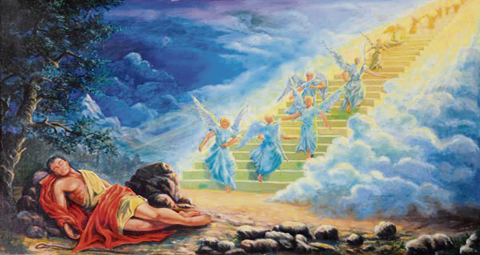November 28 | ![]() 0 COMMENTS
0 COMMENTS ![]() print
print

Two churches, two sacred places, two struggles
By Fr Ronald Rolhesier
God has given us two churches, one found is everywhere and the other is found at select places. Some of us prefer one of these and struggle with the other, but both are sacred places where God can be found and worshipped.
When most people think of church, they generally think of a building, a cathedral, a shrine, a temple, a synagogue, a mosque, or a holy site. Roman Catholics might think of St. Peter’s Basilica in Rome or some famous cathedral or their local parish church. Anglicans and Episcopalians might think of St. Paul’s Cathedral in London or their local church building, even as Muslims might think of Mecca or their local mosque. These are all churches, privileged holy places where God meets us. This is one kind of church, housed in a building or a holy location. But what grounds this concept?
In the Book of Genesis we read that Jacob had a dream within which he saw a ladder connecting earth to heaven with angels going up and down on this ladder. Waking from the dream, Jacob realizes that he has had a very privileged experience within which the gap between heaven and earth was, for a moment, bridged. Not wanting to lose this experience, nor this special place, he sets up a stone as a pillar, as an altar, to mark the place, a concrete physical spot, where he sensed a special connection between heaven and earth, so that he find his way back to this privileged spot. That’s the first church building and that’s ultimately the meaning of every church building, every temple, every shrine, every mosque, and every holy site. It’s a privileged place where there’s a ladder between heaven and earth, with the angels of God ascending and descending. It’s a special place where one can go to pray.
But there’s a second kind of church that has nothing to do with buildings, churches, temples, shrines, or holy sites. This is the church that Jesus reveals to the Samaritan woman in John’s Gospel. Most of us are familiar with the dialogue Jesus has with this woman. In their conversation she confesses a certain confusion regarding churches. She tells Jesus that she lives in a world that disagrees about where the real church, the real ladder between heaven and earth, is to be found: The Jews tell her that the real place to worship, the authentic church, is the temple in Jerusalem, but her own community, the Samaritans, tell her that the proper place to worship is Mount Gerizim. So which is the proper place to worship?
Jesus tells her that she need not necessarily worship at either of those sites. Rather the real temple, the real sacred place, the real privileged place where a ladder runs between heaven and earth, upon which angels ascend and descend, is inside of her. The real church is not always a building or a holy site, but a place of conscience and spirit inside a person, accessible to us without having to travel to the Holy Land, Rome, London, Salt Lake City, Mecca, Lourdes, or your neighborhood church. The ladder upon which angels ascend and descend between heaven and earth can be found everywhere, nature itself is a cathedral and, inside each of us, there’s a church.
Thus there are two real churches given us by God; one is outside of us, physical and concrete, the other is inside of us, spiritual and amorphous. Ideally, of course, a healthy sense of church would have us all worshipping deeply at both places, outside in our church buildings and inside in our heart and conscience. Unfortunately, that isn’t always the case. Today huge ecclesial tensions exist within all major religions and within all Christian denominations, between those who define church primarily or exclusively by one’s active participation inside of a church building (If you aren’t coming to church, you aren’t a real believer!) and those who define church, however unconsciously, as sincerity and worship within conscience and spirit. (I’m spiritual but not religious!)
Both are right, both are wrong, and both need to widen their understanding of church. God gave us both churches, and both are vital. I know persons, not least some very good male friends, who struggle with spiritual interiority. They grasp the meaning of church buildings, holy sites, and church structures, and these genuinely ground their religious lives. They can relate to the church as a building and as an institution that holds holy services; they can grasp Jacob’s ladder there. Conversely, I have good friends, not least some women friends, who have a rich spiritual interiority but struggle with the church as an institution, one that, to their mind, too-easily and sometimes idolatrously privileges certain human organizations, sites, and persons as sine qua non avenues to heaven; they struggle to see Jacob’s ladder inside such concrete, imperfect physicality.
Both need to learn from each other, and grasp more deeply the interrelationship of the two churches that God gave us.
— Fr Ronald Rolheiser is a priest and member of the Missionary Oblates of Mary Immaculate. He is president of the Oblate School of Theology in San Antonio, Texas. Visit his website at www.ronrolheiser.com











